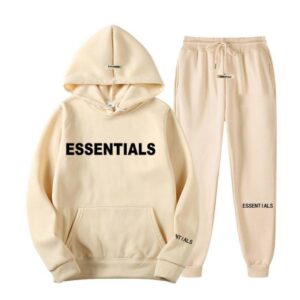
Pakistani clothes are a beautiful reflection of the country’s rich cultural heritage, diverse traditions, and evolving fashion sense. From intricately embroidered bridal wear to breezy lawn suits, Pakistani fashion is known for its vibrant colors, exquisite craftsmanship, and unique fusion of traditional and contemporary styles. Over the years, Pakistani clothes has gained popularity not only within South Asia but also among fashion enthusiasts worldwide.
A Rich Tapestry of Tradition
Pakistan is a land of cultural diversity, with each province offering a unique take on traditional attire. The most prominent styles include:
- Shalwar Kameez: The national dress of Pakistan, worn by both men and women, consists of a long tunic (kameez) paired with baggy trousers (shalwar). The styles can range from simple everyday wear to elaborately decorated outfits for formal events.
- Lehenga Choli: Often worn during weddings and festive occasions, this ensemble features a long, flared skirt (lehenga) paired with a fitted blouse (choli) and a dupatta (long scarf). The lehenga is often heavily embellished with embroidery, beads, and sequins.
- Saree: Though more commonly associated with India, the saree is also worn by many Pakistani women, especially in urban centers. It’s a long piece of fabric wrapped elegantly around the body and draped over the shoulder.
- Kurta Pajama: A simpler, more casual variation often worn by men. The kurta is a straight-cut tunic, and the pajama refers to the tapered trousers. It’s a staple in both daily wear and traditional celebrations.
Each of these styles is influenced by regional customs, religious values, and centuries-old traditions, making Pakistani clothing a living legacy of the past.
Fabrics that Define Elegance
Pakistani clothes are celebrated for their use of high-quality, luxurious fabrics. Some of the most popular materials include:
- Lawn: A lightweight cotton fabric ideal for summer. Lawn suits are an essential part of Pakistani women’s wardrobes, especially during the scorching summer months. They come in countless prints, patterns, and color palettes.
- Silk and Chiffon: Often used for formal and evening wear, these fabrics drape beautifully and are perfect for adding a touch of elegance. Designers often use chiffon for dupattas and silk for the main outfit.
- Velvet: Reserved for winter wear and formal outfits, velvet provides a regal appearance and is commonly used in bridal dresses, shawls, and festive ensembles.
- Organza and Net: These sheer fabrics are frequently used in party wear, especially for layering and dupattas. They add a graceful, ethereal touch to any outfit.
- Khaddar and Linen: These thicker fabrics are more suited to the colder months. They are durable and often feature bold prints and traditional embroidery.
Embroidery and Artistry
One of the most captivating aspects of Pakistani clothes is the detailed craftsmanship. Pakistani designers are renowned for their embroidery techniques, which include:
- Zardozi: A form of metal embroidery that adds a regal touch using gold and silver threads.
- Tilla: Similar to zardozi but often less dense, giving a more delicate finish.
- Mirror Work: Tiny mirrors are stitched into the fabric to reflect light, often used in Sindhi and Balochi styles.
- Thread Work: Colorful threads create floral, geometric, or paisley patterns that are rich in cultural symbolism.
- Appliqué and Patchwork: These are especially popular in casual wear to add contrast and texture to fabric.
Such detailing not only adds beauty but also tells a story, preserving the heritage of centuries-old design techniques.
Pakistani Fashion Designers on the Global Stage
Pakistani clothes have found their way onto international runways and red carpets, thanks to a new generation of designers who seamlessly blend tradition with modern aesthetics. Names like HSY (Hassan Sheheryar Yasin), Sana Safinaz, Maria B, Elan, and Asim Jofa have become synonymous with elegance and innovation.
These designers have expanded the global reach of Pakistani fashion, with international fashion shows, online stores, and celebrity endorsements. Many diaspora communities in the UK, US, Canada, and the Middle East actively follow Pakistani fashion trends, ensuring the demand for traditional yet modern clothing remains strong.
Everyday Wear to Bridal Couture
Pakistani clothing caters to every occasion:
- Casual Wear: Lightweight lawn or cotton and silk suits, kurtis, and trousers in floral and abstract prints.
- Formal Wear: Heavily embroidered or embellished suits in chiffon, silk, or organza, perfect for dinners and gatherings.
- Bridal Wear: Lavish lehengas, ghararas, and shararas with detailed handwork, often in deep reds, golds, or pastels.
- Festive Wear: Colorful ensembles adorned with lace, sequins, and delicate beadwork, perfect for Eid or weddings.
The Future of Pakistani Clothes
The Pakistani fashion industry is evolving rapidly, embracing sustainability, ethical production, and digital innovation. With a growing number of online boutiques and international shipping options, Pakistani clothes are more accessible than ever. At the same time, designers are paying attention to eco-friendly fabrics and fair labor practices, making fashion both beautiful and responsible.
Final Thoughts
Pakistani clothes offer a perfect blend of tradition, sophistication, and style. Whether you’re attending a wedding, celebrating a festival, or simply enjoying a casual day out, there’s a Pakistani outfit for every moment. The craftsmanship, color, and cultural richness embedded in every piece make these clothes not just garments—but expressions of heritage and identity.


